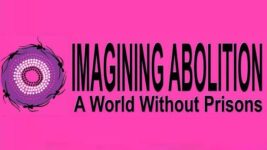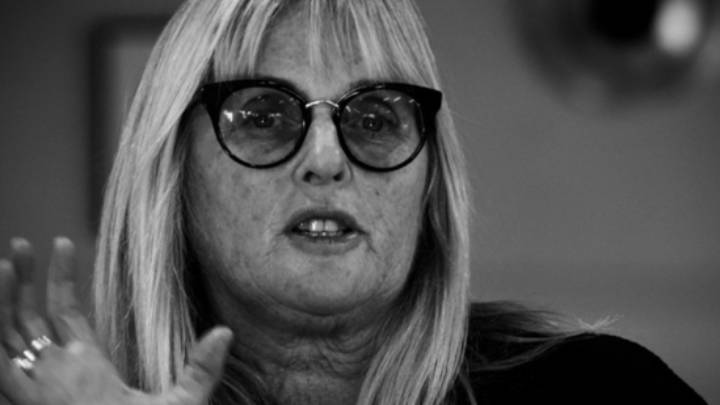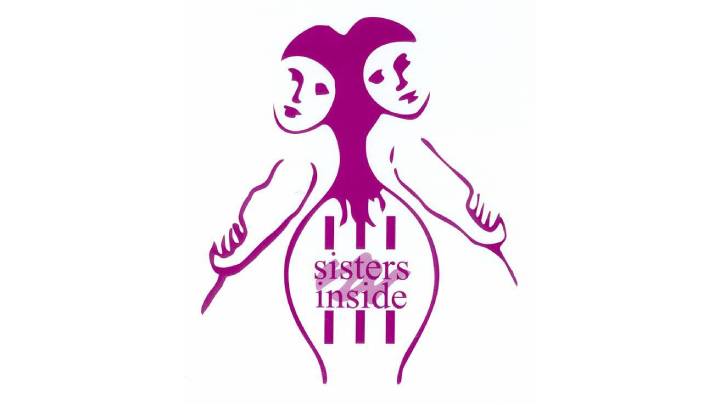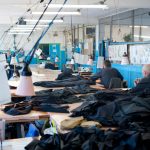Imagining Prison Abolition Is Not Difficult, Says Sisters Inside’s Debbie Kilroy

When the British arrived by boat to colonise this continent in 1788, it was all about incarceration. The First Fleet brought with it large numbers of inmates, military officers and a foreign law system with carceral punishment as an integral feature.
Indeed, the prison was key to the founding of Australia.
Yet, as Gomeroi Dunghutti and Biripi woman and First Nations rights activist Tameeka Tighe pointed out in the Guardian earlier this year, prior to invasion, her people had “existed peacefully for millennia” without correctional facilities or police officers.
The prison system was imported from Britain, but it was established anew on this continent in tandem with the colonising project, which led to the unique corrections and law enforcement institutions present here today.
In the current context, this sees Aboriginal and Torres Strait Islander people comprising 30 percent of the Australian adult prisoner population, whilst they only account for less than 3 percent of the overall populace. And these days, First Nations women are the fastest growing cohort inside.
A world beyond prisons
The concept of prison abolition has been gaining currency since the mid-2020 Black Lives Matter uprisings were sparked in the United States and subsequently spread across the planet, with impressive First Nations BLM demonstrations taking place on this continent.
The prison abolitionist movement has its roots in the early 1970s Black rights and prisoner rights movements in the US, with proponents often raising slavery and its subsequent demise as an example of how a key institution, which many couldn’t imagine life without, can be done away with.
And abolition isn’t simply about tearing down prison walls. It envisages a whole-of-society transformation, where the underlying conditions that produce crime, such as inequality and racism, are comprehended and then dismantled, bringing about an end to any supposed need for gaols.
But looking beyond serious crime, abolition recognises that correctional facilities are being used to warehouse the community’s poorest, as well as people living with mental health conditions and cognitive disabilities, rather than dealing with the societal circumstances that lead to their exclusion.
Sisters Inside
Grass roots organisation Sisters Inside advocates for the rights of women and girls in Australian correctional facilities.
Chief executive officer Debbie Kilroy established the organisation in 1992, and the lawyer is a key prison abolitionist both locally and on the international stage.
Sister Inside hosts the biannual Imagining Abolition: A World Without Prisons Conference, which has seen key advocates from across the continent and around the globe, including Professor Angela Davis and Amanda George, converging on Brisbane to discuss and progress the movement.
Sydney Criminal Lawyers spoke with Debbie Kilroy about the prison expansion program taking place right around this country, why certain people have a hard time envisaging a world without prisons, while others don’t, and the growing support the movement is currently gaining.

Ms Kilroy, you’re a key advocate in the global prison abolition movement. You’ve been campaigning on this issue for the last two decades. And this includes your organisation Sisters Inside hosting the Imagining Abolition international conferences.
Abolition can be quite an abstract and difficult concept to grasp when it’s first encountered. How do you describe what abolition is? And why is there this difficulty in approaching it?
As a woman who has been in prison, it’s not difficult for me to imagine abolition or explain why it is important.
I know the violence of the prison system on women and children firsthand. I think it’s worth saying that I didn’t leave prison in 1992 as an abolitionist.
I became an abolitionist after it became obvious to me that focusing on reform was a distraction from the work that would genuinely build up and empower women and girls in prison.
No matter how hard I worked or how much evidence I gathered about the racism and violence of prison, nothing fundamentally changed, and the system kept on abusing women and girls.
I think it can be difficult for some people – especially white, middle-class people, politicians, lawyers – to imagine abolition because carceral thinking and institutions, like the prison, are so deeply engrained in our society and, for the most part, those institutions do “work” for white people with resources, money and connections.
For people who have been subject to state violence, I don’t actually think it’s that difficult to shift the focus from the state and carceral institutions to other strategies for living together with accountability and safety.
In fact, many communities already engage in abolitionist practices and don’t rely on the state in many cases.
Professor Chelsea Watego recently described abolition as “a project of love and war”. I think that’s a good starting point to understand the central focus of abolition.
It’s a project – that combines doing and thinking differently about community and relationships –and it starts from love and respect for women and girls in prison and their families.
When we centre women and girls in prison, and when we make ourselves accountable to their demands and interests, it makes it much clearer to see the violence of the state, and the war we must fight against colonialism, racism, and capitalism, which sustain that violence.
The killing of George Floyd and the subsequent rise in the Black Lives Matter movement has led to a spike in global interest and support for prison abolition, as well as the defund/abolish the police campaign.
Your colleague in the Abolition movement Angela Davis recently welcomed this growing awareness on Democracy Now, noting that she hadn’t expected it to happen for some decades to come.
What are your thoughts on this heightened interest in prison abolition of late?
It’s good to see broader interest in abolition and I’m particularly inspired here by the Aboriginal and Torres Strait Islander activists, organisers and scholars who have seen the value of abolition to their work.
To make sure that this is not a passing interest, it’s critically important that the voices of women and girls with lived prison experience are centred in all activism and organising that adopts abolition.
In so-called Australia, as settlers here, we must also start from the recognition that we live on stolen land and abolition cannot exist in separation from Indigenous sovereignty.
As settlers, it’s on us to make sure that Aboriginal and Torres Strait Islander women and girls, particularly those impacted by imprisonment, lead this work and to do the work to understand what sovereignty means for abolition in this place.
Davis’ work on abolition and the prison industrial complex was key to revealing the links between the institution of slavery in the US and the subsequent establishment of that country’s penitentiary system.
Australia has its own unique past in terms of invasion and colonisation. How would you say this local set of circumstances has shaped the corrections system in this country?
Invasion, colonisation and settlerism have been central to how the prison system has developed in so-called Australia.
Obviously, we see the mass incarceration of Aboriginal and Torres Strait Islander women, children and men today.
These patterns of colonial and racialised imprisonment are not new – they have direct links to the mission system and the forcible movement and containment of Aboriginal and Torres Strait Islander people here in service of the colonial project to dispossess Indigenous communities from land.
In this place, it’s not possible to separate the growth of the prison from the colonial project.
In NSW, the state government has been investing heavily in new prisons over the last half decade. Crime in general in this country has been in decline since the turn of the century, yet prisoner populations have been on a steep increase.
How would you describe the way in which the prison system is operating in Australia at present?
Nationally, it’s clear to me that we’re in a period of
prison expansion, driven by a new wave of carceral politics.
It’s very concerning, especially in the context of the global Black Lives Matter movement and the extraordinary number of deaths in prisons and custody that we’ve seen across so-called Australia in the last 2 to 5 years.
In Victoria, the Homes Not Prisons campaign is an amazing group of organisers who have come together to resist the government’s plan to expand the Dame Phyllis Frost Centre – a women’s prison – even when the prison is not at capacity.
In the last few weeks, an Aboriginal woman has been killed in that prison.
In Queensland, we have a minister who proudly proclaims that the government is committed to building new prisons, saying in an estimates hearing this year that the Queensland government will have added 4,600 new beds to the prison system by 2023-24. It’s appalling.
The Queensland government is also considering legislating for a new criminal offence for coercive control, which will further increase the number of Aboriginal and Torres Strait women in prison.
There are severe delays in the parole system and the overcrowding is then used by government as another justification for prison expansion.
We must keep up the pressure on governments to resist prison expansion and law reform changes that would expand the prison population.
When the concept of abolition is initially presented to people, the first response is often to query what will be done as an alternative to imprisonment in cases where people have committed serious violent and sexual crimes.
How do you respond to these sorts of questions?
It depends who is asking. For me, it’s important to get to the root of the fear or worry that sits behind that statement, in conversation with any individual person.
It’s also worth remembering that prison only punishes some of those acts after they have happened – it does nothing to prevent this harm from happening and many instances of violence, especially sexual violence and state violence, are not punished at all.
I would rather focus my attention on making sure that my granddaughters grow up in a world where they do not experience violence and sexual assault by tackling the root of those issues in our community.
And lastly, Ms Kilroy, given the recent rise in abolitionist thinking within the community, what’s the future looking like for the cause?
Abolition is a practical project, as well as an intellectual one. We have to go beyond the slogans to sustain it.
There are a lot of great resources on abolition no
w, Angela Davis’ books, Ruth Wilson Gilmore’s books, and many new organisers/scholars who are also writing in that tradition.
If readers or listeners are serious in their interest, I’d encourage them to do the work collectively, with others, to understand abolition and what it means in their communities.
This year in Meanjin (Brisbane), one of Sisters Inside’s staff has organised an abolitionist book club outside work. We’ve met semi-regularly, around all of the restrictions.
It’s been a great opportunity to imagine abolition together and to have the types of discussions that we need to make it a reality.
At a broader political level, continuing to resist the push to legislate a new criminal offence for coercive control will remain an important site for abolitionist activism into 2022.
Solidarity with families whose loved ones have died in prison and police custody through donations to Sisters Inside or other organisations is another way that people can show practical support.
We have a fundraiser for Big Mumma, who recently died in Townsville Women’s prison, and we’ll continue to support her family throughout the coronial process.








